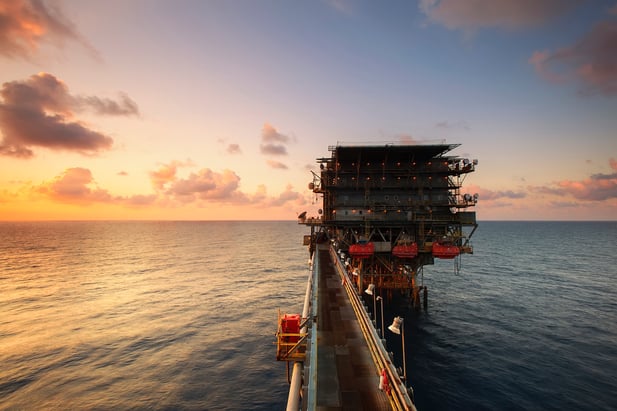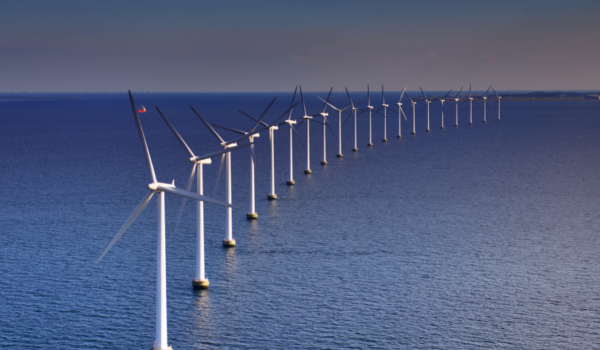Every minute of every day, the clock is ticking down towards the 2050 deadline set by many countries for emissions to reach net zero.
For some, that milestone moment – a quarter of a century into the future – is a tiny dot on the horizon, barely registering on their radar. But in the energy industry – identified by the UN as the source of three-quarters of today’s greenhouse gas emissions – it’s a very different story. There’s a growing sense of urgency that carbon reduction projects need to intensify and gather pace to keep the ambition of the Paris Agreement alive.

Energy companies, whether they’re involved in delivering oil and gas, offshore wind, carbon capture and storage (CCS) projects or hydrogen schemes, are acutely aware that they hold the key to staving off the climate emergency. Their actions in the years to come will determine whether global warming can be contained to 1.5°C: they’ve heard the warning call and they’ve rallied to it.
Everyone agrees that quick and decisive action is required, but if operators in the heart of the energy transition know anything, it’s that change does not happen overnight. Every project, regardless of size, must be fully investigated: viability, financial and safety risks as well as environmental impact are scrutinised in depth before it is progressed or rejected.
But time is a luxury the planet doesn’t have. We need to speed up that process – and that’s where Geoteric comes in. Our powerful AI technology gives the greatest understanding of the world beneath our feet, empowering geoscientists to reveal the stories within their seismic data.
Whether it’s the safe extraction of oil and gas, the placement of offshore wind turbines or the verification of CCS site suitability, we enable developers to make decisions on the future viability of projects based on data with the greatest degree of accuracy.
Our technology allows seismic data to be interpreted more quickly than ever before. Tasks that may have taken weeks or months can now be completed in days or even hours. Based on historical data on projects worldwide, our customers typically see a 90% reduction in fault interpretation time compared to traditional analysis techniques.
This rapidly reduces project cycle times. Put simply, the less time it takes to make informed decisions about the suitability and safety of a site, the more net zero by 2050 becomes a reality.
Our product suite has been used widely in the oil and gas industry for 30 years, and now operators in the renewables sector are recognising how it can help build a picture of the earth beneath development sites. The past two to three years have seen AI-based solutions gain significant traction.
Take offshore wind, for example. There are many factors which determine the location of a windfarm, from wind direction and water depth to the size of turbines and how to guarantee the safe passage of vessels and aircraft.

Geoscientists cannot contribute to that part of the puzzle, but they can unlock the mystery of how the formation of the seabed and shallow seabed could critically impact the project. Geoteric AI and integrated workflows can reveal information in unparalleled detail, and in turn, allows geoscientists to interpret the seismic data to detect, identify and classify geohazards.
It allows them to understand the geology-related risks such as shallow channels and faults to develop mitigation programmes or engineering strategies – or advise to reject the site outright because the risk of drilling or placing infrastructure there is too great.
CCS is seen as another essential route towards net zero, but it also faces several geological challenges. Just as AI-derived technology demystifies the subsurface structure of proposed wind farm sites, it also reveals the suitability of areas being considered for CCS. Critical considerations such as structural composition, aquifer or reservoir analysis and the consequences of CO2 injection are answered with AI.
Our technology foundations lie in oil and gas projects. We continue to support this sector’s focus on sustainability outcomes, helping them in the quest to reduce greenhouse gas emissions by optimising reserves from existing hydrocarbon fields. By using AI technology to examine a site’s existing seismic data, geoscientists can extract far better interpretations than was possible when the data first became available, in some cases as many as 30 or 40 years ago.
Geoteric has extensive experience of working with operators in the energy sector to support more sustainable operations. Discover how our AI technology has informed their decision-making process and helped them to take those decisions at a pace the world needs – here.

